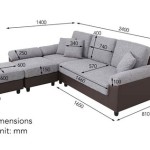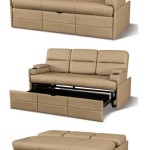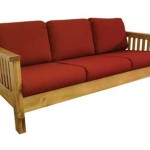The Enduring Appeal of the Vintage Two-Seat Sofa
The vintage two-seat sofa, sometimes referred to as a loveseat, represents more than just a piece of furniture; it embodies a tangible connection to design eras gone by. Its enduring popularity stems from a combination of factors: its space-saving size, its distinctive stylistic features, and its capacity to inject character into a room. Examining the history, styles, and practical considerations of the vintage two-seat sofa provides a comprehensive understanding of its lasting appeal.
The term "vintage" generally refers to items that are at least 20 years old and representative of a specific period or style. This definition encompasses a diverse range of two-seat sofas, each reflecting the aesthetic and construction techniques of its era. From the ornate Victorian loveseats to the streamlined mid-century modern designs, the vintage two-seat sofa offers a glimpse into the evolving tastes and priorities of different generations.
The loveseat's origins can be traced back to the 17th and 18th centuries where they were initially designed to accommodate women's large dresses. Over time, its function evolved, becoming more associated with intimate seating for two, solidifying its current moniker. The 20th century saw an explosion of styles, reflecting the burgeoning design movements of the time. Art Deco, with its geometric patterns and opulent materials, produced two-seat sofas that were both glamorous and functional. The post-war era ushered in mid-century modern designs, characterized by clean lines, organic shapes, and a focus on comfort and practicality. These various historical influences contribute to the rich tapestry of vintage two-seat sofa options available today.
Space Efficiency and Versatility
One of the primary reasons for the continued popularity of the vintage two-seat sofa is its space efficiency. In smaller apartments, studios, or even as a secondary seating option in larger homes, the two-seat sofa offers a comfortable and stylish alternative to a full-sized sofa. Its compact dimensions make it ideal for maximizing space without sacrificing comfort.
The versatility of the vintage two-seat sofa extends beyond its size. It can be incorporated into a variety of room settings, from living rooms and bedrooms to studies and sunrooms. Its presence can define a conversation area, provide a comfortable reading nook, or serve as an accent piece to complement existing furniture. The choice of upholstery, frame material, and style can further enhance its adaptability. A velvet-upholstered Art Deco loveseat, for example, can add a touch of glamour to a formal living room, while a linen-covered mid-century modern sofa can create a relaxed and inviting atmosphere in a casual space.
Furthermore, the vintage nature of the sofa allows for creative integration with contemporary pieces. Juxtaposing a vintage two-seat sofa with modern artwork or minimalist furniture can create a visually dynamic and personalized interior. The inherent character of the vintage piece adds depth and interest to the overall design, preventing the space from feeling sterile or generic.
Distinctive Style and Character
Beyond practicality, the vintage two-seat sofa offers a unique stylistic appeal that sets it apart from contemporary furniture. Each piece carries with it the hallmarks of its era, from the intricate carvings of a Victorian loveseat to the sleek lines of a Danish modern design. This inherent character adds a layer of depth and authenticity to the interior space.
The details of a vintage two-seat sofa, such as the button tufting, the scrolled arms, the tapered legs, and the choice of fabric, all contribute to its distinctive style. These details are often handcrafted, reflecting a level of craftsmanship that is less common in mass-produced furniture. This attention to detail enhances the visual appeal and adds to the overall quality of the piece.
Moreover, the patina of age can enhance the charm of a vintage two-seat sofa. The slight wear and tear, the subtle fading of the fabric, and the minor imperfections all tell a story of the sofa's past. These imperfections are not necessarily flaws but rather evidence of the sofa's history and its enduring presence through the years. This sense of history and authenticity is a key element of the vintage aesthetic.
Considerations for Acquisition and Restoration
Acquiring a vintage two-seat sofa requires careful consideration of several factors, including authenticity, condition, and restoration needs. Understanding these factors is essential for making an informed purchase and ensuring the longevity of the piece.
Authenticity is paramount when seeking a true vintage piece. Researching the specific style and period of interest is crucial for identifying genuine examples. Examining the construction techniques, materials, and markings can help to verify the sofa's provenance. Consulting with antique furniture experts or conducting thorough online research can provide valuable insights into identifying authentic vintage pieces.
The condition of the sofa is another critical consideration. Evaluating the frame for structural integrity, inspecting the upholstery for damage, and assessing the condition of the springs and padding are all essential steps. Minor repairs, such as patching tears in the fabric or tightening loose joints, may be relatively straightforward. However, more extensive restoration work, such as replacing the entire upholstery or rebuilding the frame, can be costly and time-consuming. It is important to factor in these potential restoration costs when determining the overall value of the sofa.
Restoration can range from simple cleaning and polishing to complete reupholstering and structural repairs. The level of restoration required will depend on the condition of the sofa and the desired aesthetic. Some collectors prefer to maintain the original patina of the piece, opting for minimal restoration to preserve its historical character. Others may choose to restore the sofa to its original glory, replacing worn upholstery and repairing any structural damage. The decision of how much to restore is a personal one, based on individual preferences and the intended use of the sofa.
The process of reupholstering a vintage two-seat sofa offers an opportunity to customize the piece to suit personal taste and interior design. Selecting a fabric that complements the sofa's style and the overall décor of the room can significantly enhance its visual appeal. Opting for high-quality materials and skilled craftsmanship will ensure that the reupholstery is durable and long-lasting.
Proper care and maintenance are essential for preserving the beauty and longevity of a vintage two-seat sofa. Regular cleaning, protection from direct sunlight, and prompt attention to any spills or stains will help to keep the sofa in good condition. Professional cleaning services specializing in vintage furniture can provide expert care and guidance on maintaining the sofa's integrity. By taking these steps, the vintage two-seat sofa can be enjoyed for generations to come, serving as a cherished piece of history and a stylish addition to the home.
The vintage two-seat sofa offers a compelling blend of practicality, style, and historical significance. Its space-saving size makes it ideal for a variety of settings, while its distinctive character adds depth and personality to the interior space. By carefully considering authenticity, condition, and restoration needs, it is possible to acquire a vintage two-seat sofa that will be treasured for years to come.

Hepburn Vintage Velvet 2 Seat Sofa From Old Boot Sofas

Hepburn Shabby Chic Vintage Leather Small 2 Seater Sofa

Two Seater Sofa 1970s Vintage Floral Theme 1970

Ellis 2 Seater Sofa Bespoke Vintage Oak Furniture

Vintage 2 Seater Sofa 1970s For At Pamono

Vintage Sofa Company Granby 2 Seater

Hyde Vintage Leather Sofa 2 Seater Dovetailed Doublestitched

Chambers Vintage Leather 2 Seater Sofa Luxury Delux Deco Ltd

Taylor 2 Seater Sofa Vintage Chestnut

Hepburn Shabby Chic Vintage Leather Small 2 Seater Sofa








